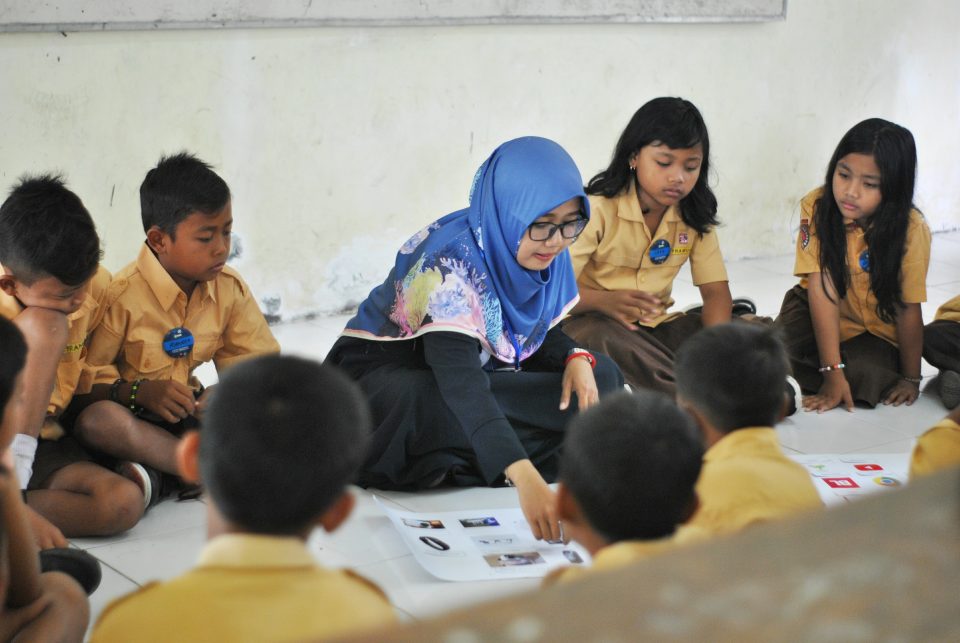Education is an important instrument to enhance knowledge and instill values.
The serious contemporary problems involving young people such as juvenile delinquency, intolerance, and indifference to the nation need to be addressed in a subtle fashion.
Any attempt to have students’ love for the nation – instilling a sense of patriotism – is in dire need of and calls for tangible and compelling ways. It is franker to say that a love for the country is so more about value instead of cognitive gain. There is no clear relation between higher academic grades and the act of patriotism or feeling patriotic. I recall a primary school boy getting off his bicycle to salute the flag during the Heroes’ Day ceremony in the town square of Blitar in 2019. He went viral and drew a lot of sympathies; the 10-year-old student, Raihan, was awarded a bicycle by the Blitar City Police. Raihan’s act shows how the love of his homeland arises from one’s dictate of conscience, suggesting that values speak louder than grades and maturity when it comes to patriotic acts, despite their simplicity.
The relation between patriotism and children or the youth need not be stereotypically implemented; assuming they are not yet mature and do not understand the essence of love for the homeland. Considering their young age, some may believe that any attempt to instill a patriotic spirit in young people must be carried out with a doctrinal approach. What we are likely to dismiss is that encouraging a sense of love and defense of the country for children and young people must go hand-in-hand with the progress of the times they are familiar with.
Given the fact that today’s young people, better known as millennials, are very cyber literate and adept at using gadgets, cultivating the spirit of nationalism in the younger generation needs to be done visually. This must be through education, whether at school or college. The visual approach to nationalism promises at least two benefits.
First, it will create a reflective learning tradition. Teaching students the spirit of patriotism through visual products, such as films or video clips via YouTube, is a fast and effective learning medium. Why? Visual content provides students with lots of information in a short time, enriching their perspectives and encouraging their ability to reflect. For example, listening to Bung Tomo’s impassioned speech taking place in Surabaya in 1945 will make students’ blood boil and their hairs stand up. They might further stand up while saluting or reciting takbeer, following what Bung Tomo said. Those are spontaneously done and without coercion.
After watching the heroic speech, some students should begin to find out what led to Bung Tomo’s speech. Why did the British army attack Surabaya? Why did the Indonesian people and soldiers decline to raise the white flag and surrender their weapons obtained from the Japanese troops? Their capability to find answers to all events leading to Bung Tomo’s speech will enrich students’ perspectives and ramp up their ability to reflect on the essence behind the heroic event.
Psychologically speaking, the provoked soul sparked by the speech of a hero will likely change people for the better, much more than good marks on assignments and exams in history at school. High marks often stop at the cognitive level, but the awakened soul will build and contribute to society.
The second is the maintenance of the collective memory of the nation. Scapegoating children or the youth for their poor understanding and acts of patriotism will not change them for the better, losing their strong grip on the nation’s collective memory. On many occasions, juvenile delinquency is tightly bound to their disappointment with the tension between expectations and bitter reality, high ideals, and harsh truth. They rebel and create havoc with a view to getting attention. Their disappointment is multiplied when they have no room for self-actualization. Things become worse as they confront crises of paragon seen from widespread bad news rather than stories that push positive civilization.
In this context, media activists such as journalists, influencers, and TV station owners – either mainstream or social media – need to produce positive content that builds a sense of pride for Indonesia’s younger generation. The Ministry of Education and Culture might collaborate with media activists, involving teachers and students through educational content. They need to be exposed to future challenges and opportunities, among others these are the demography bonus and will be the fifth-largest economy in the world by 2045. While they take pride in some accomplishments of young Indonesians, like Southeast Asia’s number one YouTuber Atta Halilintar, or the most active netizens in the world, they must also be prepared for the tangible challenges of the future and opportunities from now on.
Teachers need to realize that jargon, challenges, and opportunities in the future are required to be transformed into students’ fresh collective memories as actors of the next human history. Reminding them of the collective memory of the past as the identity of this nation is not wrong: we fought for independence instead of it being gifted by the colonialists; we are blessed with peaceful, abundant, and rich soil (gemah ripah loh jinawi). Yet the past collective memory will not be vivid until it is accompanied by real-time understanding, being something that the youth encounters here and now.




